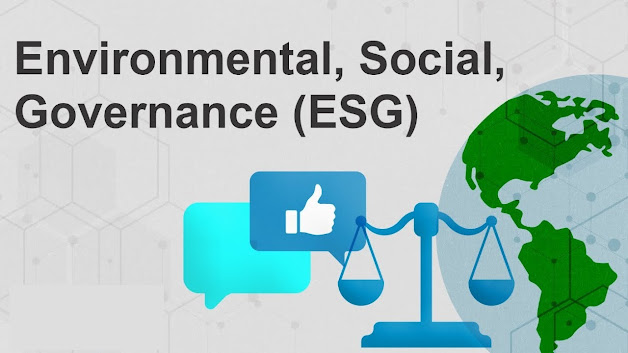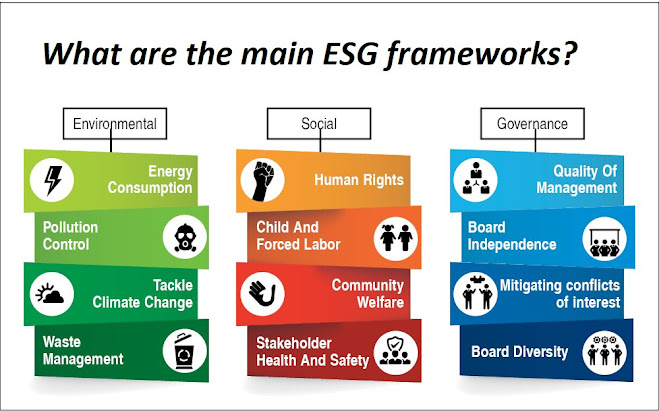How to effectively communicate your ESG sustainability performance through reporting ?
Effective communication of your ESG sustainability performance through reporting can be critical for engaging stakeholders, building trust, and demonstrating your commitment to sustainability. Here are some tips for effectively communicating your ESG sustainability performance through reporting:
- Use a comprehensive framework: Use a widely accepted framework, such as the Global Reporting Initiative (GRI) Standards, to structure your sustainability report. This ensures that you cover all the essential aspects of ESG reporting and enables comparability with other companies' reports.
- Know your audience: Understand who your stakeholders are and tailor your report to meet their specific needs. For example, investors may be interested in the financial impact of your sustainability initiatives, while customers may be more interested in the social impact.
- Use clear and concise language: Use language that is easy to understand and avoids jargon. Use graphics and tables to illustrate your points.
- Be transparent: Be transparent about your sustainability performance, including your successes and challenges. This will build trust and credibility with your stakeholders.
- Use storytelling: Use storytelling to bring your sustainability initiatives to life. Use real-life examples to show the impact of your sustainability initiatives on your stakeholders.
- Focus on materiality: Focus on the issues that are most material to your business and stakeholders. This will help you to prioritize your sustainability initiatives and make them more relevant to your stakeholders.
- Provide context: Provide context for your sustainability performance by comparing your performance to previous years or to industry peers. This will help your stakeholders to understand your progress and the challenges you face.
By following these tips, you can effectively communicate your ESG sustainability performance through reporting, engage your stakeholders, and demonstrate your commitment to sustainability.
How do you communicate effectively on ESG and sustainability?
To communicate effectively on ESG and sustainability, it is important to have a clear understanding of your audience and their specific interests and concerns related to sustainability. Here are some tips for communicating effectively on ESG and sustainability:
- Know your audience: Understand the different stakeholders who are interested in your sustainability performance and tailor your message accordingly. Investors may be interested in the financial implications of sustainability, while customers may be more interested in the social or environmental impact.
- Be transparent: Be open and honest about your sustainability performance, including your successes and challenges. This builds trust and credibility with your stakeholders.
- Use data and metrics: Use data and metrics to quantify your sustainability performance and show progress over time. This helps to demonstrate the impact of your sustainability initiatives and provides a basis for comparison with industry peers.
- Use storytelling: Use real-life examples and stories to bring your sustainability initiatives to life and help stakeholders understand their impact.
- Use plain language: Avoid using technical jargon and explain sustainability concepts in plain language that is easy to understand.
- Engage stakeholders: Involve stakeholders in the sustainability conversation, solicit feedback, and address their concerns. This fosters a sense of shared responsibility and helps build support for sustainability initiatives.
- Align messaging with strategy: Ensure that your sustainability messaging is aligned with your overall business strategy and goals. This helps to integrate sustainability into core business activities and demonstrates a long-term commitment to sustainability.
By following these tips, you can effectively communicate on ESG and sustainability, build support for your sustainability initiatives, and demonstrate your commitment to sustainability to your stakeholders.
What are the most effective ways to communicate about sustainability?
There are several effective ways to communicate about sustainability, depending on your audience and the message you want to convey. Here are some of the most effective ways:
- Sustainability Reports: Sustainability reports are a comprehensive way to communicate your sustainability performance to stakeholders. These reports often follow established frameworks such as the Global Reporting Initiative (GRI) Standards and include quantitative data, analysis, and future goals.
- Social Media: Social media platforms can be a powerful tool for communicating sustainability initiatives, engaging stakeholders and building brand awareness. Platforms such as LinkedIn, Twitter, and Instagram can be used to share sustainability-related news, updates, and images.
- Infographics: Infographics are a visual way to communicate complex sustainability data and concepts in a simple, easy-to-understand format. Infographics can be shared on social media, websites, and in sustainability reports.
- Events: Events such as conferences, workshops, and webinars provide an opportunity to share sustainability knowledge and engage stakeholders. These events can be used to showcase sustainability initiatives and bring together stakeholders to discuss common challenges and opportunities.
- Storytelling: Storytelling is a powerful way to engage stakeholders and communicate the impact of sustainability initiatives. Stories can be used to share real-life examples of sustainability initiatives and how they have positively impacted stakeholders.
- Partnerships: Partnerships with other organizations, such as NGOs, can help to communicate sustainability initiatives and provide credibility to your sustainability efforts.
- Packaging and labeling: Sustainable packaging and labeling can be used to communicate a brand's commitment to sustainability and educate customers about the environmental impact of their purchase decisions.
By using a combination of these communication methods, you can effectively communicate about sustainability and engage stakeholders to build support for sustainability initiatives.
Is ESG reporting sustainability reporting?
ESG (Environmental, Social, and Governance) reporting is a type of sustainability reporting that focuses on a company's performance in these three areas. ESG reporting is an important part of sustainability reporting, but sustainability reporting can also include other areas such as economic performance, supply chain management, and human rights.
Sustainability reporting is a way for companies to communicate their sustainability performance to stakeholders, including investors, customers, employees, and communities. Sustainability reports typically include information on the company's environmental, social, and economic impacts, as well as their sustainability strategies, goals, and progress.
ESG reporting specifically focuses on a company's environmental, social, and governance performance, often using standardized frameworks such as the Global Reporting Initiative (GRI) Standards or the Sustainability Accounting Standards Board (SASB) standards. ESG reporting in India is becoming increasingly important for investors who are looking to invest in companies that prioritize sustainability and manage their ESG risks and opportunities effectively.
In summary, ESG reporting is a type of sustainability reporting that focuses on a company's performance in the areas of environmental, social, and governance, but sustainability reporting can include a broader range of topics.
How do you communicate internally with sustainability?
Communicating sustainability initiatives and goals effectively to employees is essential for creating a culture of sustainability within the organization. Here are some ways to communicate sustainability internally:
- Internal Sustainability Reports: Creating internal sustainability reports can help to communicate sustainability performance, goals, and progress to employees. This can include data on energy usage, waste reduction, water conservation, and other sustainability metrics.
- Sustainability Newsletters: Sending out regular sustainability newsletters can help to keep employees informed about sustainability initiatives and progress. These newsletters can include stories about sustainability successes, upcoming sustainability events, and information about sustainable practices that employees can implement.
- Intranet and Internal Social Media: Posting sustainability news and updates on an internal intranet or social media platform can help to keep employees engaged with sustainability initiatives. This can include updates on sustainability goals, employee sustainability challenges, and sustainability news and events.
- Sustainability Training: Providing sustainability training to employees can help to build awareness and understanding of sustainability issues and how they can contribute to the organization's sustainability goals. This can include training on sustainable practices, such as energy conservation, waste reduction, and sustainable transportation.
- Sustainability Committees: Creating a sustainability consulting committee within the organization can help to engage employees in sustainability initiatives and provide a forum for employees to contribute their ideas and suggestions.
- Recognition and Rewards: Recognizing and rewarding employees who make significant contributions to sustainability initiatives can help to build a culture of sustainability within the organization. This can include recognizing employees who reduce energy usage or waste, or who come up with innovative sustainability solutions.
By using a combination of these communication methods, you can effectively communicate sustainability initiatives and goals to employees and create a culture of sustainability within the organization.
Read more This Blog :- What are the main ESG frameworks?




Comments
Post a Comment